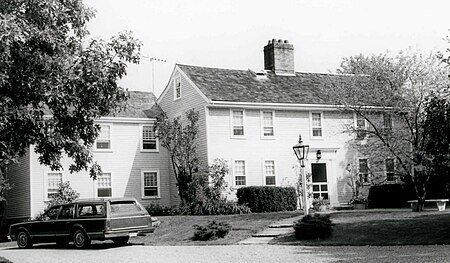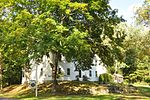House on Labor-in-Vain Road
Houses in Ipswich, MassachusettsHouses on the National Register of Historic Places in Essex County, MassachusettsNational Register of Historic Places in Ipswich, Massachusetts

The House on Labor-in-Vain Road is a historic house in Ipswich, Massachusetts. Built about 1720 and enlarged c. 1810, it has a well-preserved assortment of architectural stylistic details predating 1850. It was listed on the National Register of Historic Places in 1990.
Excerpt from the Wikipedia article House on Labor-in-Vain Road (License: CC BY-SA 3.0, Authors, Images).House on Labor-in-Vain Road
Labor-In-Vain Road,
Geographical coordinates (GPS) Address Nearby Places Show on map
Geographical coordinates (GPS)
| Latitude | Longitude |
|---|---|
| N 42.677777777778 ° | E -70.806111111111 ° |
Address
Labor-In-Vain Road 151
01938
Massachusetts, United States
Open on Google Maps










